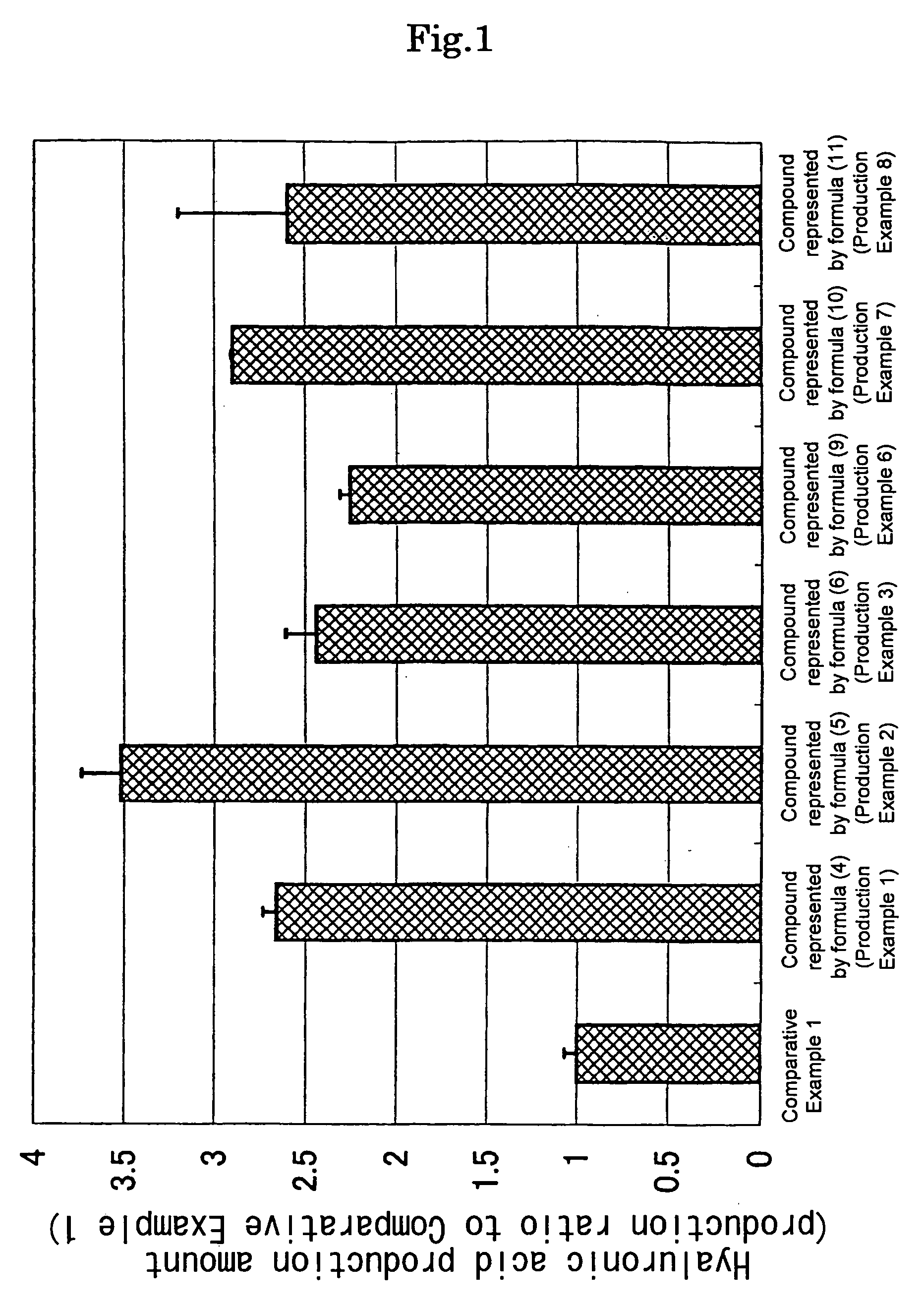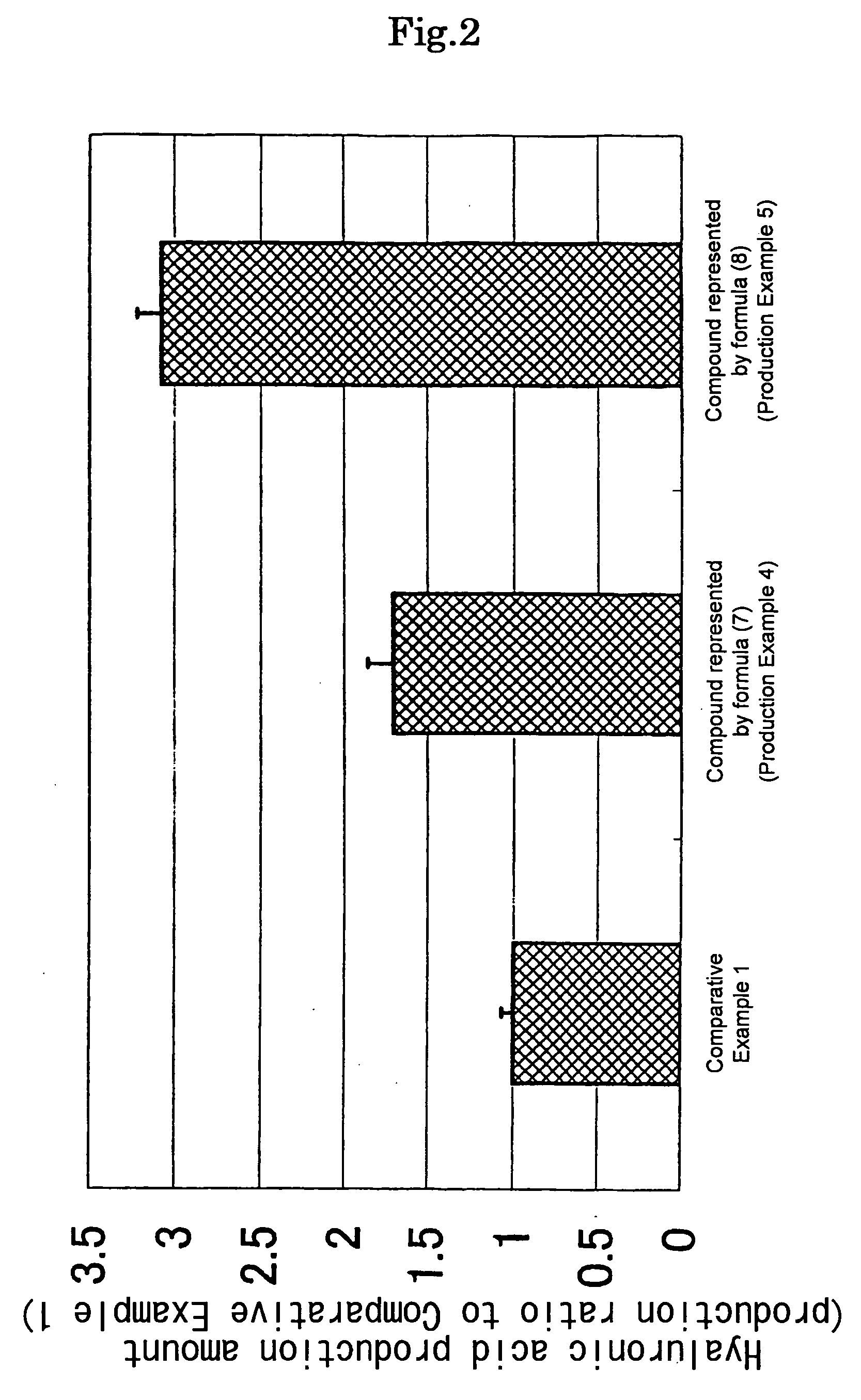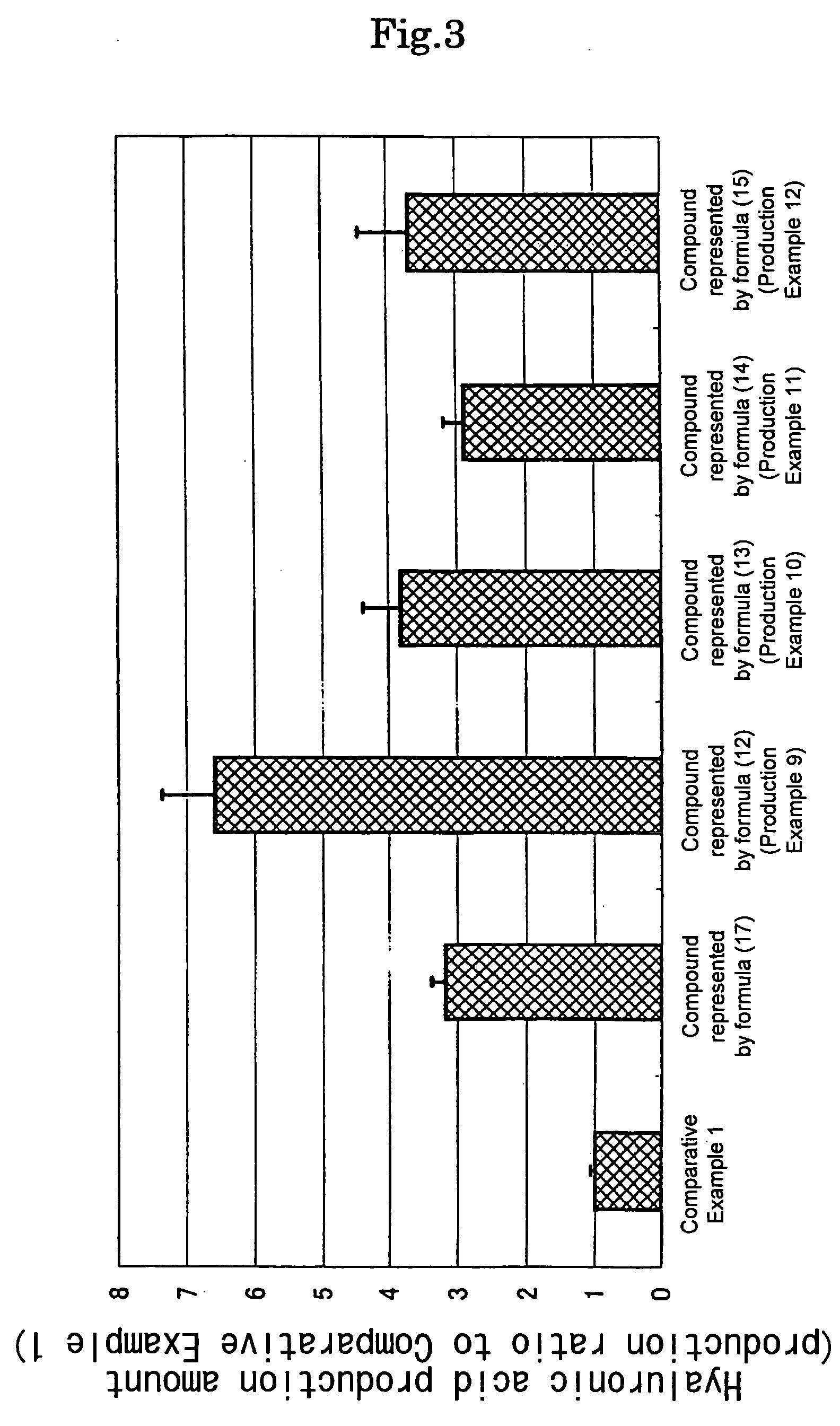N-acetylglucosamine derivatives and use thereof
a technology of n-acetylglucosamine and derivatives, which is applied in the direction of sugar derivates, esterified saccharide compounds, drug compositions, etc., can solve the problems of skin irritation, retinoic acid has skin irritation properties, and cannot achieve fundamental improvement, so as to maintain vital and moist skin and improve anti-wrinkle
- Summary
- Abstract
- Description
- Claims
- Application Information
AI Technical Summary
Benefits of technology
Problems solved by technology
Method used
Image
Examples
production example 1
Production of octyl(2-acetamido-2-deoxy)β-D-glucopyranoside [the compound represented by the formula (4)]:
[0032] After 2 g of 2-acetamido-1,3,4,6-tetra-O-acetyl-2-deoxy-β-D-glucopyranoside was dissolved in 20 mL of anhydrous chloroform, 1.0 mL of trimethylsilyl trifluoromethanesulfonate was added and the mixture was stirred at room temperature for 5 hours. Chloroform was added to the reaction mixture, and after washing with an aqueous saturated sodium hydrogen carbonate solution, the chloroform layer was dried over anhydrous magnesium sulfate and the solvent was distilled off under reduced pressure. The residue was dissolved in 15 mL of dichloroethane, and 0.89 mL of 1-octanol and 119 mg of (±)-camphor-10-sulfonic acid were added. The mixture was stirred at 60° C. for 2 hours. Chloroform was added to the reaction mixture, and after washing with an aqueous saturated sodium hydrogen carbonate solution, the chloroform layer was dried over anhydrous magnesium sulfate, and the solvent ...
production example 2
Production of 2-acetamido-2-deoxy-6-O-octanoyl-α-D-glucopyranose [the compound represented by the formula (5)]:
[0035] To 0.5 g of N-acetylglucosamine, 5 mL of pyridine and 5 mL of N,N-dimethylformamide were added, and the mixture was heated to 70° C. under stirring, and 0.46 mL of n-octanoyl chloride was dropwise added, and the reaction was carried out for 4 hours. On completion of the reaction, the reaction was extracted with ethyl acetate and washed with 2 mol / L hydrochloric acid, and the obtained ethyl acetate layer was dried over anhydrous magnesium sulfate and then the solvent was distilled off under reduced pressure. The resulting residue was purified by silica gel column chromatography (elution solvent; chloroform:methanol=15:1) to obtain 170 mg of 2-acetamido-2-deoxy-6-O-octanoyl-α-D-glucopyranose as a white crystal.
[0036]1H-NMR measurement results of 2-acetamido-2-deoxy-6-O-octanoyl-α-D-glucopyranose are as follows:
[0037] NMR (DMSO-d6) δ: 0.92 (t,3H,J=6.8 Hz), 1.33 (s,1...
production example 3
Production of octyl(2-acetamido-2-deoxy-6-O-octanoyl)β-D-glucopyranoside [the compound represented by the formula (6)]:
[0038] In 1 mL of pyridine, 100 mg of the compound [the formula (4)] obtained in Production Example 1 was dissolved, and 61 μL of n-octanoyl chloride was dropwise added, and the reaction was carried out for 4 hours. On completion of the reaction, after extracting with chloroform and washing with 2 mol / L hydrochloric acid, the ethyl acetate layer was dried over anhydrous magnesium sulfate and then the solvent was distilled off under reduced pressure. The resulting residue was purified by silica gel column chromatography (elution solvent; chloroform:methanol=20:1) to obtain 40 mg of octyl(2-acetamido-2-deoxy-6-O-octanoyl)β-D-glucopyranoside as a white crystal.
[0039]1H-NMR measurement results of octyl(2-acetamido-2-deoxy-6-O-octanoyl)β-D-glucopyranoside are as follows:
[0040] NMR (DMSO-d6) δ: 0.85 (t,3H,J=6.8 Hz), 1.23(s,18H), 1.40-1.45 (m,2H), 1.50-1.55 (m,2H), 1.7...
PUM
| Property | Measurement | Unit |
|---|---|---|
| steric structure | aaaaa | aaaaa |
| hyaluronic acid production | aaaaa | aaaaa |
| acid production | aaaaa | aaaaa |
Abstract
Description
Claims
Application Information
 Login to View More
Login to View More - R&D
- Intellectual Property
- Life Sciences
- Materials
- Tech Scout
- Unparalleled Data Quality
- Higher Quality Content
- 60% Fewer Hallucinations
Browse by: Latest US Patents, China's latest patents, Technical Efficacy Thesaurus, Application Domain, Technology Topic, Popular Technical Reports.
© 2025 PatSnap. All rights reserved.Legal|Privacy policy|Modern Slavery Act Transparency Statement|Sitemap|About US| Contact US: help@patsnap.com



